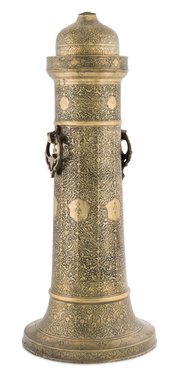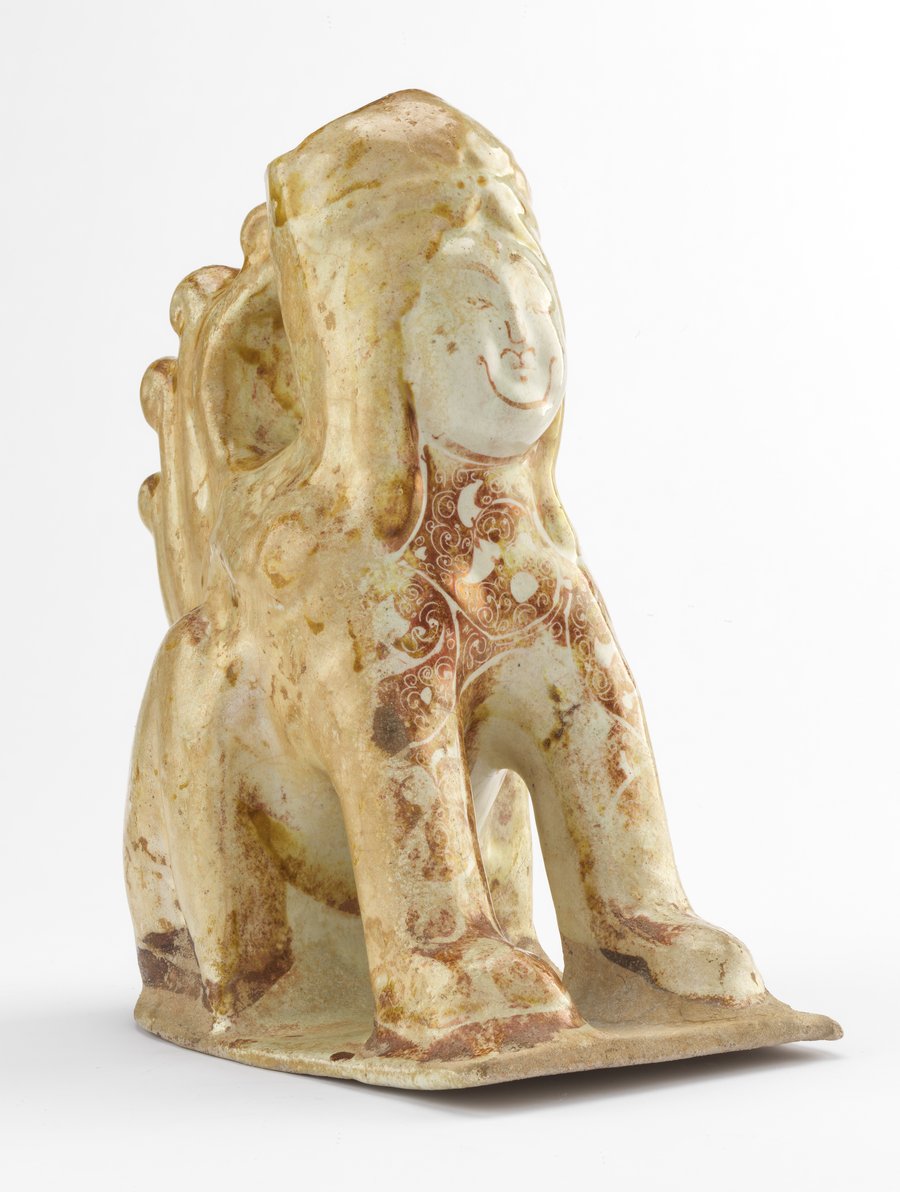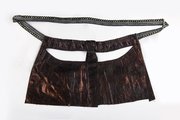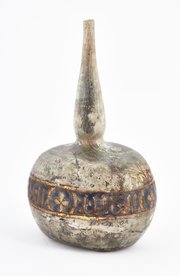
Sphinx-shaped Ewer
Museum of Islamic Art
- Title:
- Sphinx-shaped Ewer
- Production place:
- Kashan
- Date:
- 1200
- Period:
- Seljuq
- Title:
- Sphinx-shaped Ewer
- Production place:
- Kashan
- Date:
- 1200
- Period:
- Seljuq
- Material:
- Fritware, Glaze, Lustre
- Technique:
- Lustre painting, Glazing, Modeling
- Dimensions:
- 22.5 × 10.6 × 17 cm
This ewer dating to the era of the Great Seljuqs of Iran is unique in its genre. The potter has given it the shape of a crouching sphinx - a mythical, hybrid creature with the head of a woman, the body of a lion, and the wings of an eagle, resting on a square base, its entire body covered with a painted motif of swirling tendrils and leaves. On its head rests a hollow pointed headpiece, characteristic of female royal attire during the Seljuq period, through which liquids could have been poured in and out. Held by its handle formed from the curled feathers of the wings, this peculiar ewer would have been used as a water-pourer, most likely offered to guests in a domestic home upon arrival, and before and after eating a meal, or to serve beverages during a banquet. The decoration in lusterware, a sophisticated and expensive double-firing technique, would have given a lustrous glow and shine to this object, especially when admired under flickering candlelight. The sphinx became a particularly popular motif during the Seljuq time, associated to benevolent solar and astral symbolism, thus its reproduction of a variety of objects, from luster-painted ceramics to metalwork, which would have greatly pleased the owners.
During the Seljuq period, between Syria and Iran, we assist to an increasing interest into tridimensional figural representation, with a number of ceramic pieces, either functional or ornamental, representing animals and human beings. But while several human- or animal-shaped ewers are known from medieval Iran, this particular ewer is a unique exemplar for its lively and original rendition of a sphinx.



